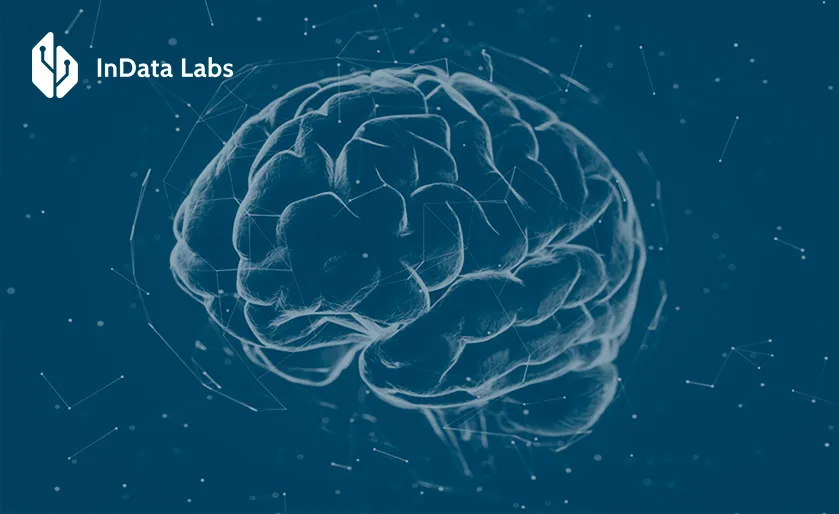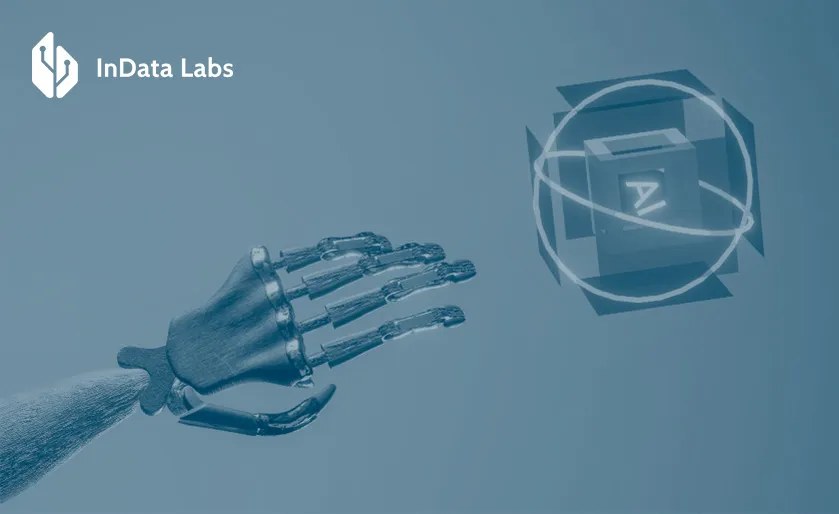Great customer experience (CX) is nowadays an essential differentiator for businesses to maintain a competitive edge. Generative AI for customer experience has made the process of giving customers personalized and consistent experiences easier. The advantages of generative AI for CX are the tempo, productivity, and uniformity with which businesses can provide great customer service. In fact, AI-driven customer experiences increase the likelihood of companies receiving recommendations.
In the moving and logistics industry, where timelines are tight and emotions often run high, getting things right the first time isn’t just important; it’s non-negotiable. Customers aren’t just looking for help; they’re looking for answers fast. Whether they’re figuring out how much their move will cost, understanding what services are included, or nailing down the perfect move-out date, the pressure is real.

Source: Unsplash
That’s where generative AI steps in. AI systems deliver the information instantly and take the hassle out of scheduling. These AI systems handle a wide range of customer queries, such as providing instant quotes and answering common questions about pricing structures, service options, and timelines. By reducing human error and handling the details, GenAI lets businesses focus on what really matters, keeping customers happy and stress-free.
This article analyzes how generative AI is revolutionizing customer service in the moving and logistics industry and its importance in business success, especially in a customer-first era.
What is Generative AI?
Generative AI is a part of artificial intelligence that creates new content, text, images, or even music based on input data. While traditional AI sticks to predefined scripts, generative AI shakes things up, using advanced machine learning models to mimic human creativity.
Examples of generative AI tools
Take ChatGPT, for example. It can chat with customers like a pro, offering real-time answers. Or DALL·E, which can create custom visuals for marketing campaigns. Across various sectors, these tools are creating great impact, from retail to healthcare and, yes, even the moving business.
There’s no shortage of tools demonstrating the power of generative AI. Here are a few other examples:
- Jasper: A go-to for copywriting, Jasper can create blogs, ad copy, or even entire marketing strategies.
- Runway ML: A creative suite for video editing and visual storytelling powered by AI.
- Synthesia: Used for creating AI-generated video content, like training modules or product demos.
These tools are versatile, but what’s exciting is how they’re reshaping different industries.
How machine learning powers generative AI customer experience
At the heart of generative AI is machine learning, which facilitates Generative AI for customer experience. It permits systems to learn from extensive datasets and alter them to fit customer needs. By analyzing aspects such as customer interactions and behavioral trends, GenAI can provide highly personalized and context-aware responses.

Source: Unsplash
This technology is useful because businesses can form real connections and dynamic customer experiences. For example, machine learning is why GenAI can deliver those spot-on product recommendations that make customers think, “How did they know?” It’s also what powers conversational AI to respond to queries in a way that feels natural, not robotic. Machine learning’s continuous learning characteristics guarantee that GenAI evolves with every interaction, becoming smarter and more effective over time.
Industries adopting GenAI
From retail and healthcare to real estate and logistics, companies are finding creative ways to put generative AI to work. Some examples are enhancing personalization, automating repetitive tasks, and improving general customer satisfaction.
Real estate and moving services
Many companies, like Zillow and Redfin, use generative AI to generate engaging property descriptions and predict market trends. In the moving industry, AI simplifies processes like scheduling, generating cost estimates, and even offering post-move tips.
Logistics and supply chain
If there’s one thing the logistics sector thrives on, it’s precision. GenAI is a natural fit here, optimizing delivery routes to save time and fuel while lowering business costs and improving sustainability. For example, Amazon uses AI to provide customers with up-to-the-minute shipment statuses, reducing uncertainty and building trust.

Retail and E-commerce
Retailers use generative AI to personalize clients’ experiences. For example, online stores seem to know exactly what the client wants. That’s AI at work, curating product recommendations, sending on-point emails, and even offering virtual try-ons for clothes and makeup.
Healthcare
Generative AI is helping doctors and researchers analyze complex medical data, draft reports, and even discover new drug formulas. For patients, AI can break down complex health information into digestible explanations, making it easier to understand treatment plans.

Source: Unsplash
Entertainment and media
Platforms such as Spotify use AI to build custom playlists that feel like they’re made for the listener. Or to create their Spotify Wrapped at the end of the year. Netflix is another great example of the synergy between customer experience (CX) and generative AI.
The streaming giant leverages a range of AI technologies to customize content, simplify content distribution, and continuously improve service quality. In fact, more than 80% of the content people watch on Netflix is discovered through its recommendation system.
Education
In schools and online learning platforms, AI supports customized learning plans and interactive materials. Generative AI changes education from one-size-fits-all to a more dynamic approach. Imagine a chatbot that explains algebra in a way anyone can understand, motivating more students to learn.

Source: Unsplash
Marketing and advertising
GenAI creates engaging ad campaigns, social media posts, and even influencer partnerships. Need a catchy slogan? AI technology can deliver hundreds of ideas in seconds.

Why use generative AI in customer experience
Improving customer experiences has always been a make-or-break factor for businesses. Whether someone’s ordering takeout, booking a flight, or coordinating a move, the way they engage with a brand can turn a customer into a loyal fan. Combining generative AI and customer experience works well because the process becomes faster, more personal, and more intuitive without losing quality.
Using GenAI for customer experience is not about using chatbots only or retrieving information faster. With the right tactic, generative AI CX can improve different business processes.
Personalization at scale
Imagine a customer reaching out to a moving company with questions about packing services. Instead of generic responses, generative AI analyzes the customer’s prior interactions and preferences to provide specific advice, such as recommending the best packing materials for a local move rather than a long-distance one. Watch a video to learn more about personalization with the help of AI-powered chatbots:
Faster response times
Generative AI in CX also boosts efficiency. AI-powered chatbots handle routine inquiries like scheduling, quotes, and FAQs, allowing human agents to deal with complex customer needs. This combination of speed and customization improves customer satisfaction and helps businesses operate more efficiently.

Source: Unsplash
Automating routine tasks
Minimizing wait times for customer inquiries is crucial to keep clients satisfied. AI-powered chatbots offer a practical solution by handling routine questions about pricing, scheduling, and FAQs with speed and accuracy. These bots operate 24/7, ensuring customers get instant answers, even outside regular business hours.
Understanding and predicting customer needs
A great thing regarding generative AI in customer service is its capacity to proactively predict customers’ needs. AI analyzes customer behavior and preferences to suggest relevant services or solutions. For example, a customer booking a moving service might automatically get recommendations for storage options or packing supplies based on their order history.
Enhancing multichannel experiences
Nowadays, customers communicate with businesses across multiple platforms, websites, social media, email, and more. Generative AI supports uniform experiences no matter where the interaction happens.
A customer might start by asking questions about moving services via chatbot on a website, then switch to email for follow-up. AI ensures that context is carried over, so they don’t have to repeat themselves; a common frustration in customer service.
Win-win for customers and businesses
Generative AI makes customers happy, and it makes life easier for businesses, too. By handling routine tasks and streamlining communication, AI frees up resources, reduces costs, and boosts efficiency. That means happier teams, happier customers, and a healthier bottom line. Businesses don’t need a massive budget to start using generative AI. Tools like ChatGPT or Jasper are affordable and easy to implement, making them accessible for businesses of all sizes.
GenAI for CX in the moving and logistics industry
The moving and logistics sector is an ideal candidate for generative AI because it deals with high customer interaction and demand for efficiency. Let’s look at applications of AI in customer experience when it comes to the moving and home-service industry:
- Improving customer support: Generative AI-powered chatbots deliver speedy assistance to customers, addressing queries about pricing, scheduling, or service details at any hour. These AI systems can manage multiple conversations simultaneously, ensuring no customer is left waiting.
- Automating cost estimate: A challenge in moving services is the lack of cost transparency. Generative AI can create accurate, detailed quotes by analyzing customer inputs like the size of their home, distance, and additional services. This reduces confusion and builds trust.
- Scheduling simplified: AI tools integrate with scheduling systems to offer real-time booking options. If a customer needs to change their moving date, the AI can instantly provide alternatives without requiring manual adjustments.
- Creating useful content: Businesses in the moving industry can use generative AI to create blogs, guides, and FAQs tailored to customer needs. For instance, an AI system might generate a guide on how to pack fragile items or a checklist for a long-distance move, keeping customers informed and engaged.
- Post-move engagement: Generative AI doesn’t stop once the move is complete. It can follow up with personalized messages offering tips for settling in or suggesting related services like home cleaning or unpacking assistance. This continued engagement strengthens customer relationships and encourages repeat business.
How businesses can get started with generative AI
Adopting generative AI can feel like a big leap with a steep learning curve. However, AI is indispensable in the customer experience management plan. Luckily, with the right approach, it’s manageable and highly rewarding. Let’s look at how AI can improve customer experience:
Step 1: Identify business needs
Start by pinpointing areas where generative AI can make the biggest impact. What are common customer queries? Do customers frequently ask the same questions? Is scheduling a major pain point? Map out challenges and align them with business goals to effectively use GenAI.
Step 2: Choose the right tools
Not all AI platforms are created equal. Businesses should research AI solutions like OpenAI’s ChatGPT or Jasper to find tools that best fit their business size and budget. Many platforms offer scalable solutions, so anyone can start small and grow.
Step 3: Train the AI system
AI is only as good as the data it’s trained on. Ensure AI reflects the brand’s tone and values by feeding it real-world scenarios and customer interactions. This step is critical for creating a seamless, human-like experience.
Step 4: Monitor and iterate
Once the system is live, monitor its performance. Track metrics like response times, customer satisfaction, and error rates. Use this data to make continuous improvements, ensuring AI technology evolves alongside the business.
Step 5: Scale strategically
After the kinks are ironed out, explore additional applications. Businesses might start with an AI chatbot and eventually expand into AI-driven analytics for customer behavior predictions or personalized marketing campaigns until they achieve a complete AI-powered customer experience.
Challenges and considerations
As transformative as generative AI is, it has its challenges, and it cannot effortlessly solve every challenge. Businesses looking to adopt this technology must carefully navigate a few key hurdles to ensure its success.
Maintaining a human touch
While generative AI excels at personalizing interactions and streamlining processes, it lacks something distinctly human: empathy. Customers can tell when they’re talking to a machine, and while they may appreciate speed and accuracy, they still value emotional understanding.
For instance, if a customer is frustrated because their moving service was delayed, a generic AI-generated apology might seem hollow. This is where human oversight becomes essential. AI can assist by quickly identifying the issue and offering possible resolutions, but a human agent should step in to deliver the apology with empathy and reassurance.
Achieving this balance requires businesses to design AI systems that complement human efforts rather than replace them. AI can handle the heavy lifting such as routine inquiries, scheduling, or cost estimates, freeing human agents to focus on more complex or emotionally charged situations.
Addressing privacy and data security
Generative AI thrives on data. The more information it has, the better it can personalize interactions and predict customer needs. However, this reliance on data comes with significant responsibility. Customers are increasingly aware of how their information is used, and any misstep can erode trust in an instant.
To ensure data privacy, businesses must adopt secure AI systems that prioritize encryption and follow strict access controls. Compliance with privacy regulations like GDPR or CCPA is non-negotiable. For example, if the AI system collects customer addresses to provide moving quotes, it must also have protocols to protect this sensitive data from unauthorized access or breaches.
Another vital aspect is transparency. Customers should know what data is being collected, why it’s needed, and how it will be used. Clear, concise privacy policies and opt-in mechanisms can help build trust while meeting regulatory requirements.

Source: Unsplash
Additionally, businesses must plan for the unexpected. A proactive approach to generative AI and CX includes regular audits of AI systems, security updates, and contingency plans to address potential breaches swiftly.
Training AI for brands
Generative AI systems don’t come preloaded with a company’s unique tone, values, or expectations. Without proper training, the AI system might produce responses that feel generic or, worse, out of sync with the brand identity. This can confuse customers and dilute the trust that was built.
GenAI, customer experience, and strategies for success
The key takeaway to effective AI training lies in feeding the system high-quality data. Start by collecting examples of past customer interactions that reflect the brand voice. If the business prides itself on being friendly and approachable, it needs to ensure the AI’s language mirrors that tone. On the other hand, if professionalism and precision are the calling cards, the AI must embody those traits.
Real-world scenarios are invaluable for fine-tuning. For instance, if a customer asks for help with a complex moving itinerary, the AI should respond in a helpful and confident way without overwhelming them with jargon. Regular testing and feedback loops are crucial to refine these responses over time.

Source: Unsplash
Additionally, businesses should consider involving their teams in the training process. Customer service agents, marketing professionals, and even sales teams can provide insights into common customer pain points and how they’ve successfully addressed them in the past. This collaborative approach ensures that AI becomes a true extension of a team, not just a standalone tool.
Staying ahead of evolving technology
Generative AI is evolving rapidly, and what’s cutting-edge today might feel outdated in a year. Businesses must stay proactive by keeping an eye on emerging trends and advancements. Regular updates to AI systems, participation in industry forums, and ongoing training for teams can help businesses remain competitive and relevant.

By thoughtfully addressing these challenges, businesses can adopt the benefits of generative AI while maintaining the trust, authenticity, and human connection that customers want. After all, technology should enhance, not replace, the relationships that make a business unique.
Conclusion
Generative AI is redefining how companies implement exceptional customer experiences, particularly in fields like moving and home services. Activities, for example, automating tasks, personalizing interactions, and using AI-powered solutions, offer a path to improved customer satisfaction and loyalty.
To remain competitive, businesses in the moving and logistics fields should be committed to innovation and utilizing tools like generative AI for CX to make the moving journey seamless. If companies are ready to change the way the industry sees AI customer experience, they should explore the capacities of AI driven technology.



